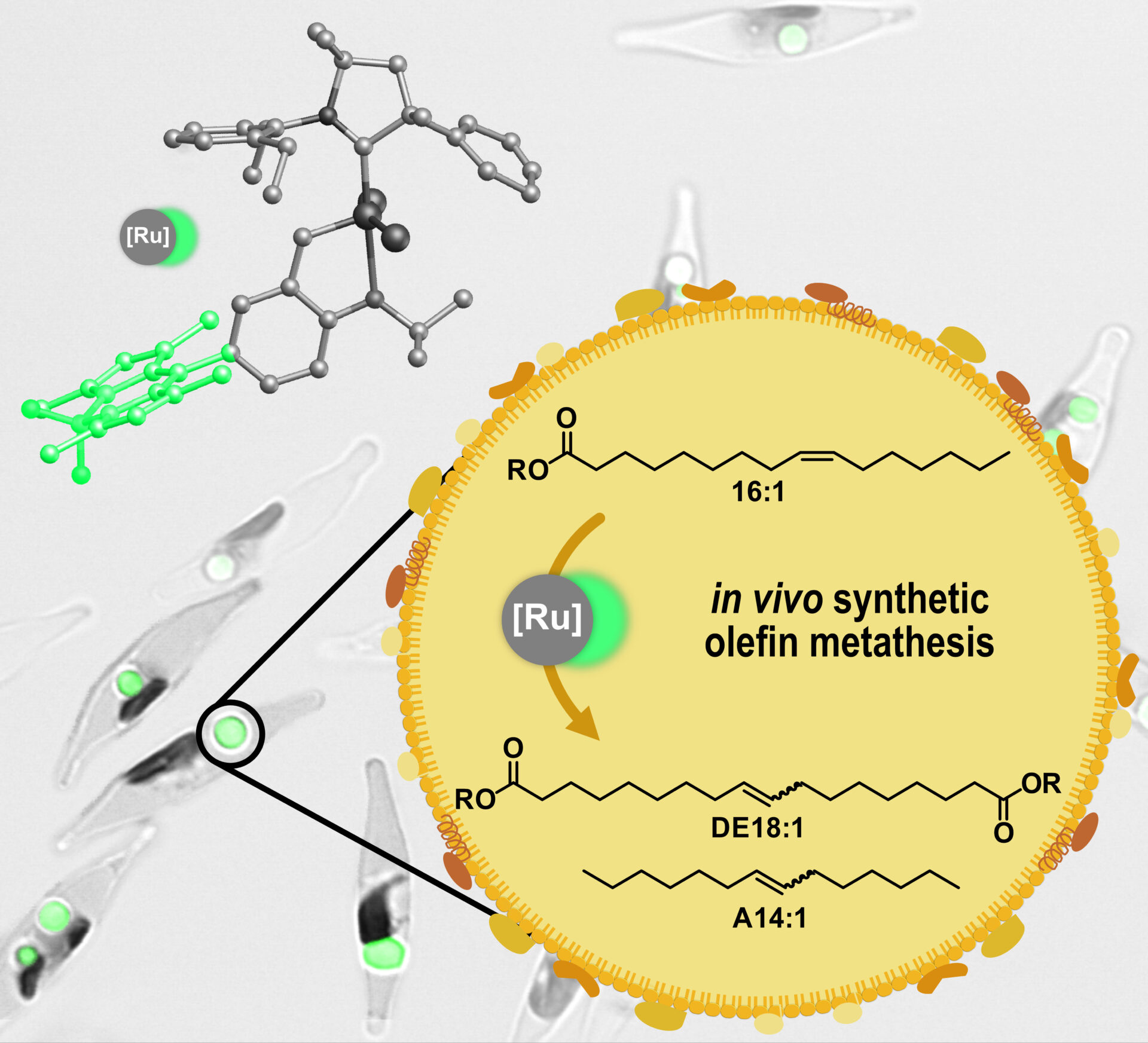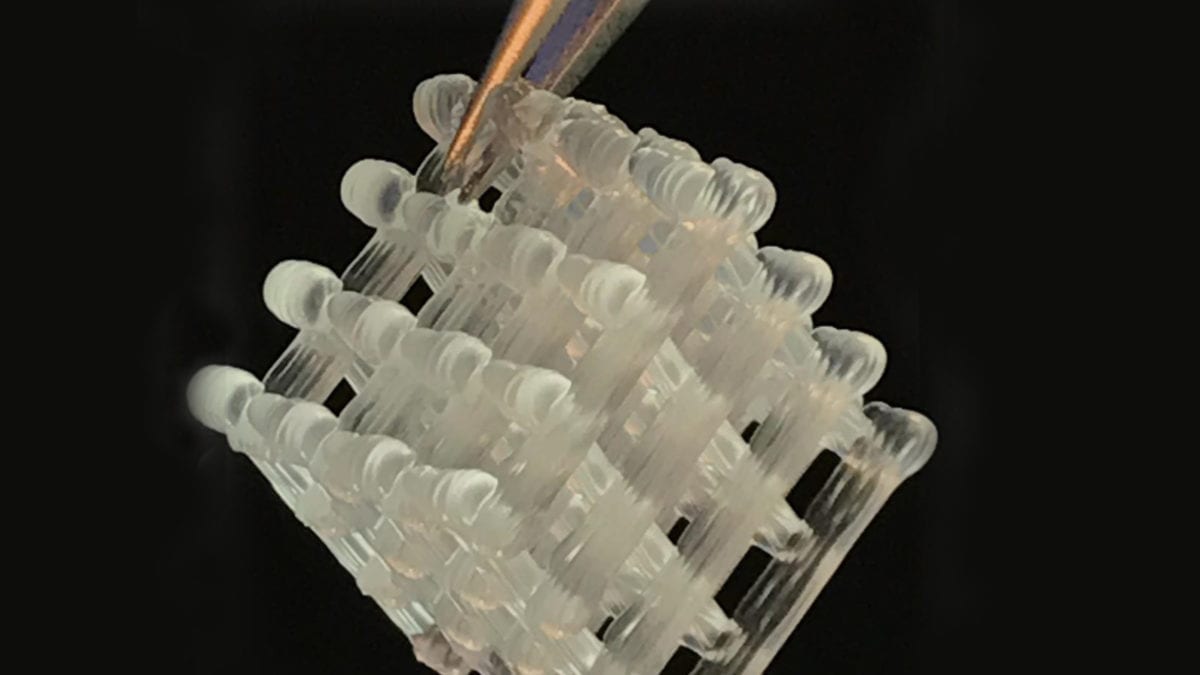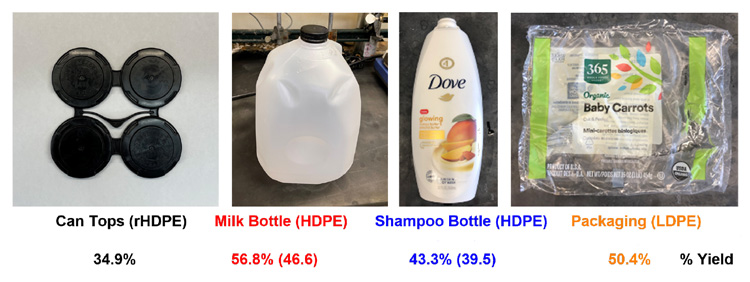
Catalytic olefin metathesis can be performed in living microalgae. In this process, fatty acids stored in the lipid organelles of the algae are converted into polymer building blocks and chemicals.
Chemist from the University of Konstanz succeeds in taking a key step towards the production of sustainable chemicals in living microfactories
Fossil raw materials are limited and not available and extractable everywhere in the world – as we are becoming acutely aware of right now by the example of fossil fuels and rising energy prices. Renewable raw material sources will therefore play an increasingly important role in the future: as energy sources, but ideally also as suppliers of building blocks for more environmentally compatible chemicals and materials.
In order to use renewable raw materials – such as plant oils – for the production of chemicals, they must first be processed and in some cases chemically converted. In the industry, this process is commonly referred to as refining. Up to now, complex processes were required to extract and separate the bio-raw materials from the cells in which they were produced, before the materials could be upgraded and further processed.
Expanding the natural machinery of cells
Doctoral researcher Natalie Schunck and Professor Stefan Mecking from the Department of Chemistry at the University of Konstanz have now opened up a way to make the step of upgrading sustainable raw materials much more efficient. They succeeded in introducing suitable synthetic catalysts, i.e. substances that bring about the desired upgrading reactions, into unicellular algae – specifically, to the site where they produce and store their lipids.
In their recent paper in Angewandte Chemie, the researchers describe how the catalysts were successfully transported to their destination. In addition, they provide evidence that the catalyst they have used remains stable in the lipid storage compartments of the algae cells and fulfils the anticipated task there: the conversion of the unsaturated fatty acids of the algae cells into modified, long-chain building blocks suitable for the production of sustainable chemicals. “By introducing the catalysts, we managed to add a chemical reaction to the algae’s machinery that does not occur in nature but is highly relevant to the upgrading of oils and fats in the feedstock processing industry –olefin metathesis. The algae cells could thus be turned into tiny refineries,” summarizes Mecking.
Binding atmospheric carbon dioxide
The microalgae Schunck chose are challenging, because they possess a cell wall that needs to be overcome. In order to still smuggle her catalyst to its destination, the researcher used a trick: She coupled the catalyst to a dye normally used to stain the lipid stores of algal cells. In this way she was able to ensure and also observe that the catalyst reaches its target. “Natalie Schunck succeeded in this very difficult experimental work due to her outstanding qualities as a researcher. This project required extensive expertise in chemistry and sound knowledge of biology, which she had both acquired in the Life Science study programme,” explains Mecking.
Decisive advantages of such algae are obvious: They are photoautotrophic, using atmospheric carbon dioxide as a carbon source and sunlight as an energy source for the photosynthesis of complex chemical compounds, such as their fatty acids. This makes them promising candidates when it comes to finding renewable resource producers. “By expanding the functional spectrum of algae, we are now a step closer to using them in the long-term as a living microfactory for sustainable chemicals,” Mecking concludes.
Original Article: Algae as microscopic biorefineries
More from: University of Konstanz
The Latest Updates from Bing News & Google News
Go deeper with Bing News on:
Living microfactories
- We gave our dated living room the ultimate makeover on a budget – here’s my hack to make old skirting boards look new
A WOMAN has revealed that she and her partner gave their dating living room a mega, modern makeover, without breaking the bank. The DIY enthusiast revealed the tips and tricks that saved the ...
- Civil War Living History Reenactment | PHOTOS
Civil War Living History Reenactment Saturday at Carroll County Farm Museum. Paul and his son Brady Atwood relax before battle during the Living History Reenactment at the Carroll Farm Museum in ...
- The benefits of multigenerational living
The traditional nuclear family structure is evolving. Today, many families are opting for multi-generational living arrangements, where families of different generations share a single household.
- Cost of living & bills
Since their introduction at the UK's largest retailer Tesco more than two decades ago, self-checkouts have become a fixture in our supermarkets - but so too have technical glitches, problems ...
- Healthy Living
This September marks the 34th year of National Recovery Month, a time dedicated to raising awareness that hope and healing from substance use problems is possible.This year’s theme is “Hope is ...
Go deeper with Bing News on:
Microscopic biorefineries
- A New Microscopic Principle
IT is known that the spherical aberration of electron lenses sets a limit to the resolving power of electron microscopes at about 5 A. Suggestions for the correction of objectives have been made ...
- Microscopic Colitis
Microscopic colitis is an inflammatory bowel disease (IBD) that causes chronic inflammation in the inner lining of the colon, leading to persistent, watery diarrhea. The inflammation can't be seen ...
- Metroidvania around a microscopic world to save dogs everywhere in BioGun
a platforming action-adventure that takes place entirely inside a whimsically microscopic world of viruses and vaccines. And whimsically enjoyable it is, with a hand-drawn world and characters ...
- 'I'm a doctor - here's the one thing you must never do after going to the toilet'
“This allows aerosolised toilet juice to travel far and wide. “To capture this disgusting, tidal wave of microscopic waves of pathogens scientists used bright green lasers and camera equipment ...
- World-first microscopic stiffness probe could advance early cancer diagnosis
"Our device makes it possible to 'feel for a stiff lump,' but on a single cellular scale, meaning we could catch cancer early at microscopic cell scales rather than large malignant tumor scale.










